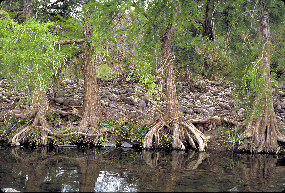Research and Conservation in Southern Sonora, Mexico
Taxodium distichum var. mexicanum (Montezuma cypress, sabino)
|
This is one of the largest trees in Sonora, reaching 80 feet (25 m) in height. It is usually an evergreen riparian tree, but may become deciduous in seasonally dry channels. The rot-resistant lumber will last for a century and is prized for construction. It is still common because the prohibition against cutting live trees is widely respected. |
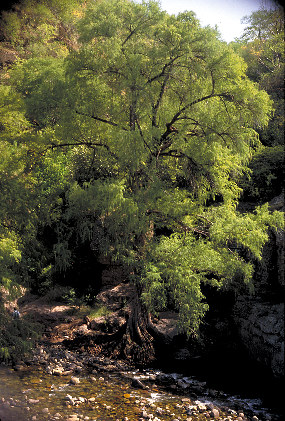 Taxodium distichum mexicanum on the Río Cuchujaqui, Sonora. Photo: Mark Dimmitt |
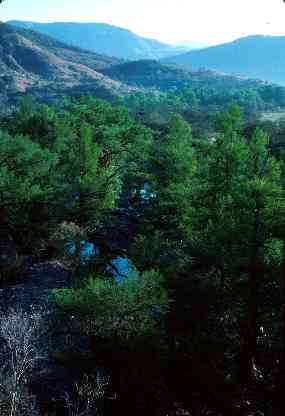 Taxodium dominates this El Cajon stretch of the Río Cuchuhaqui, Sonora. Photo: George M. Ferguson |
| The massive sabino is the most flood-resistant of the riparian trees in this region. It is the dominant tree in frequently flooded areas, and often the only species in the middle of the channel. The interlaced roots lock the trees and rocks together, stabilizing the banks to such a degree that scenes have not changed noticeably in 20 years despite annual flooding. But even this giant is occasionally knocked over during larger floods, and appears to have some trouble in establishment; seedlings and saplings are not common. |
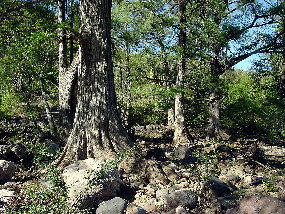 Photo: Mark Dimmitt |
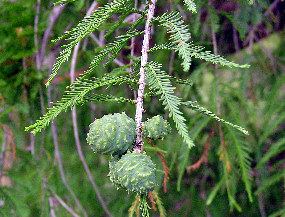 Taxodium seed cone. Photo: Mark Dimmitt |
